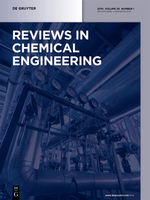
REVIEWS IN CHEMICAL ENGINEERING
Scope & Guideline
Elevating Research Standards in Chemical Engineering.
Introduction
Aims and Scopes
- Sustainable Chemical Processes:
The journal emphasizes sustainable approaches in chemical engineering, exploring technologies that minimize environmental impact, such as wastewater treatment, biorefining, and the conversion of waste to valuable products. - Advanced Materials and Nanotechnology:
A core focus is on the development and application of advanced materials, including nanocomposites and nanostructures, for various uses such as catalysis, pollution remediation, and energy storage. - Process Engineering and Reactor Design:
Research on innovative reactor designs and processes, including modeling and optimization of chemical reactors, is a prominent theme, addressing efficiency and performance in chemical production. - Environmental Engineering:
The journal covers studies related to environmental impact, including pollutant degradation, waste treatment technologies, and methods for greenhouse gas reduction, highlighting the intersection of chemical engineering and environmental science. - Data-Driven Approaches and Machine Learning:
There is a growing interest in integrating data analytics and machine learning into chemical engineering, focusing on enhancing process optimization and predictive modeling. - Energy Conversion and Storage:
The journal explores advancements in energy technologies, particularly in the design and efficiency of electrochemical systems and batteries, reflecting the industry's shift towards greener energy solutions.
Trending and Emerging
- Membrane Technology:
Research on membrane technology is gaining traction, particularly in applications for gas separation, water treatment, and bioengineering, reflecting a growing interest in efficient and sustainable separation processes. - Biotechnology and Biochemical Engineering:
There is an increasing focus on biotechnological applications within chemical engineering, including enzyme catalysis, biorefining, and the use of biological materials for chemical production. - Circular Economy and Waste Valorization:
The theme of circular economy is emerging prominently, with studies on waste valorization and sustainable practices in chemical processes, aligning with global sustainability goals. - Machine Learning and AI in Chemical Engineering:
The integration of machine learning and artificial intelligence for optimizing chemical processes and predictive modeling is becoming a significant area of interest, indicating a trend towards data-driven methodologies. - Advanced Oxidation Processes (AOPs):
Research into advanced oxidation processes for wastewater treatment and pollutant degradation is trending, highlighting the need for effective environmental remediation technologies.
Declining or Waning
- Traditional Chemical Synthesis Methods:
Research related to conventional chemical synthesis methods appears to be waning, as the field increasingly prioritizes innovative and sustainable alternatives, such as enzymatic processes and green chemistry. - Basic Theoretical Studies:
There is a noticeable decrease in publications focused solely on fundamental theoretical studies in chemical engineering. Instead, the emphasis has shifted towards practical applications and interdisciplinary approaches. - Conventional Catalysis:
The exploration of traditional catalytic processes is less frequent, as the journal pivots towards more advanced and hybrid catalytic systems, such as photocatalysis and nanocatalysts. - Low-Impact Chemical Engineering:
The focus on low-impact, less innovative technologies is diminishing as the journal seeks to highlight cutting-edge advancements that align with sustainability and efficiency goals.
Similar Journals

Applied Chemistry for Engineering
Catalyzing Progress in Chemical EngineeringApplied Chemistry for Engineering, published by the Korean Society of Industrial and Engineering Chemistry, is a vital resource for researchers and professionals engaged in the realms of chemical engineering and applied chemistry. With an ISSN of 1225-0112 and an E-ISSN of 1228-4505, this journal serves as a platform for innovative research that spans diverse applications within these fields. Although currently not classified under open access, it provides critical insights and advancements to its audience, contributing to the ongoing discourse in the industry. The journal's significance is underscored by its rankings in Scopus, where it resides in the Q4 category for both Chemical Engineering and Chemistry, evidencing its commitment to publishing relevant studies despite its emerging status. As it continues to grow through the converged years from 2007 to 2024, Applied Chemistry for Engineering aims to bridge the gap between theoretical research and practical engineering solutions, making it an essential tool for students, researchers, and professionals alike.
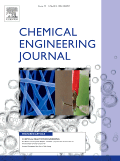
Chemical Engineering Journal
Leading the charge in multidisciplinary chemical research.The Chemical Engineering Journal, published by Elsevier Science SA, stands as a premier platform for groundbreaking research in the multidisciplinary fields of chemical engineering, chemistry, and environmental science. With an impressive impact factor and ranking in the Q1 category across multiple categories such as Chemical Engineering, Chemistry, and Environmental Chemistry for 2023, this journal not only leads in publishing high-quality research but also emphasizes the latest advancements and innovative solutions in these critical areas. Researchers and professionals benefit from the rigorous peer-review process and can access a wealth of knowledge through the journal’s extensive archive, which has been a staple in academia since 1975. The Chemical Engineering Journal is vital for anyone aiming to advance their understanding of complex chemical processes, engineering applications, and environmental impacts, making it an essential resource for students, academics, and industry experts alike.

Small Science
Advancing the Frontiers of Catalysis and Materials ScienceSmall Science is an esteemed open-access journal published by WILEY, dedicated to pioneering research in the realms of catalysis, materials science, and chemical engineering. Established in 2021, this journal has rapidly gained recognition, ranking in the top quartiles (Q1) in various categories, including a remarkable 17th position in Materials Science and 8th in Chemical Engineering on Scopus. With an impact factor reflective of its growing influence and a commitment to disseminating cutting-edge knowledge, Small Science serves as a crucial platform for researchers, professionals, and students seeking to explore the latest advancements and applications in these dynamic fields. The journal's open-access model ensures wide reach and accessibility, facilitating collaboration and innovation across disciplines. Its headquarters are located in the United States, at 111 River St, Hoboken, NJ, supporting a global readership keen on addressing contemporary scientific challenges and driving progress in technology and materials synthesis.
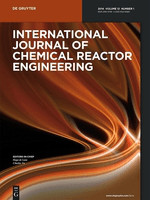
International Journal of Chemical Reactor Engineering
Innovating Solutions for Tomorrow's Chemical ChallengesInternational Journal of Chemical Reactor Engineering, published by WALTER DE GRUYTER GMBH, serves as a vital platform for advancing knowledge in the field of chemical engineering, specifically focusing on reactor engineering. The journal, recognized by its ISSN 2194-5748 and E-ISSN 1542-6580, has maintained its commitment to quality research since its inception in 2002 and spans converged years through 2024. With a respectable Q3 ranking in the miscellaneous category of Chemical Engineering and a current Scopus rank of 158/273, it represents a significant resource for researchers aiming to publish innovative findings and practical applications. Although it operates under a subscription model, it still attracts attention for its rigorous standards and insightful contributions to the field. The journal’s focus on the interdisciplinary aspects of chemical reactor design, optimization, and safety underscores its importance in driving forward the technical and theoretical boundaries of chemical engineering. Addressed from Genthiner Strasse 13, D-10785 Berlin, Germany, the International Journal of Chemical Reactor Engineering is a must-read for professionals and scholars dedicated to pushing the frontiers of chemical reaction technologies.
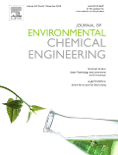
Journal of Environmental Chemical Engineering
Leading the charge in environmental chemical innovation.Journal of Environmental Chemical Engineering, published by Elsevier in the United Kingdom, stands at the forefront of integrative research in the field of environmental science and engineering. With an impressive impact factor that places it in the top quartile (Q1) across multiple categories, including Chemical Engineering (Miscellaneous), Pollution, and Waste Management, it serves as a vital resource for researchers and professionals dedicated to advancing sustainable chemical processes and technologies. Since its inception in 2013, this journal has continually focused on fostering innovation and disseminating knowledge that addresses global environmental challenges. With rankings that highlight its influence—22nd in Environmental Science & Pollution and 11th in Process Chemistry & Technology—the journal publishes high-quality articles that span both theoretical investigations and applied research. This dedication to excellence culminates in a comprehensive platform that not only shares significant advancements but also shapes the future directions of environmental chemical engineering.
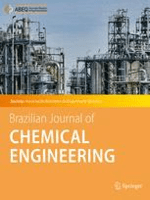
BRAZILIAN JOURNAL OF CHEMICAL ENGINEERING
Innovating Solutions for a Sustainable FutureThe Brazilian Journal of Chemical Engineering (ISSN: 0104-6632, E-ISSN: 1678-4383), published by Springer Heidelberg, stands as a prominent open-access journal dedicated to disseminating innovative research and advancements in chemical engineering since its inception in 1997. With a commitment to enhancing knowledge exchange within the field, this journal is indexed in Scopus, earning a respectable Q3 rank in the category of General Chemical Engineering as of 2023. It provides a platform for researchers, professionals, and students to explore a diverse range of topics, fostering collaboration and innovation from its base in Brazil. The journal has converged its operations from 1995 and will continue to push the boundaries of chemical engineering research until 2024 and beyond. As a critical resource for up-to-date methodologies and emerging trends, the Brazilian Journal of Chemical Engineering is essential for those aiming to make impactful contributions in this dynamic and evolving field.

Green Chemical Engineering
Exploring groundbreaking methods for environmental progress.Green Chemical Engineering, an esteemed journal published by KEAI PUBLISHING LTD, plays a pivotal role in advancing the field of sustainable chemical engineering. With an Open Access policy since 2020, this journal facilitates the free exchange of cutting-edge research and innovations that address critical environmental challenges. Based in China, it has rapidly gained recognition with impressive category quartiles, ranking Q1 in numerous relevant fields including Catalysis, Chemical Engineering (miscellaneous), Filtration and Separation, and Process Chemistry and Technology. Its presence in Scopus highlights its significance, with top rankings (e.g., Rank #4/19 in Filtration and Separation) placing it in the upper echelons of chemical engineering literature. Designed for researchers, professionals, and students alike, Green Chemical Engineering aims to foster a collaborative platform for the dissemination of pioneering work that contributes to a greener and more sustainable future.

ACS Engineering Au
Advancing Engineering through Chemistry and InnovationACS Engineering Au, published by the American Chemical Society, is an esteemed open-access journal dedicated to advancements in the field of engineering, encompassing a wide range of interdisciplinary studies that merge principles of chemistry with cutting-edge engineering practices. With an E-ISSN of 2694-2488, this journal aims to disseminate significant and innovative research findings that contribute to the development of sustainable technologies and solutions in various engineering domains. Since becoming an open-access journal in 2021, it has fostered greater accessibility and visibility for researchers and practitioners alike, encouraging collaboration and knowledge sharing across the global community. By providing a platform for high-quality research, ACS Engineering Au plays a pivotal role in shaping the future of engineering disciplines, making it an essential resource for academics, industry professionals, and students who are eager to stay at the forefront of engineering advancements.

Izvestiya Vysshikh Uchebnykh Zavedenii Khimiya i Khimicheskaya Tekhnologiya
Unveiling Breakthroughs in Chemistry Since 1980Izvestiya Vysshikh Uchebnykh Zavedenii Khimiya i Khimicheskaya Tekhnologiya is a prominent academic journal dedicated to the fields of chemistry and chemical technology, published by the esteemed IVANOVSKOGO KHIMIKO-TEKHNOLOGI TSHESKOGO INST in the Russian Federation. With an ISSN of 0579-2991 and E-ISSN of 2500-3070, this journal has been a crucial platform since its inception in 1980, showcasing significant advancements and research findings, particularly in its converged periods from 1980, 1982, and 2017 to 2024. The journal is ranked Q3 in Chemical Engineering and Chemistry, reflecting its dedication to quality scholarship. Although open access options are currently unavailable, the journal plays a vital role in disseminating knowledge and fostering collaboration among researchers, professionals, and students in these critical scientific domains. Situated in Ivanovo, Russia, it continues to be a focal point for impactful research, making it an essential resource for those aiming to stay at the forefront of innovation in chemistry and chemical engineering.

Journal of the Pakistan Institute of Chemical Engineers
Advancing Chemical Engineering Knowledge for a Sustainable Future.The Journal of the Pakistan Institute of Chemical Engineers serves as a pivotal platform for advancing the field of chemical engineering within Pakistan and beyond. Published by the Pakistan Institute of Chemical Engineers, this journal aims to disseminate high-quality research, reviews, and case studies that cover a wide scope of topics relevant to chemical engineering, including process design, environmental technology, and materials science. Although it operates under a non-open access model, the journal is committed to maintaining rigorous peer-review standards to ensure the publication of impactful articles that contribute to the advancement of knowledge and best practices in the discipline. As a hub for researchers, professionals, and students alike, this journal not only fosters academic collaboration but also plays an integral role in shaping the future of chemical engineering in the region. With an ISSN of 1813-4092, it is dedicated to enhancing the visibility and accessibility of chemical engineering research, promoting innovation and education within the field.